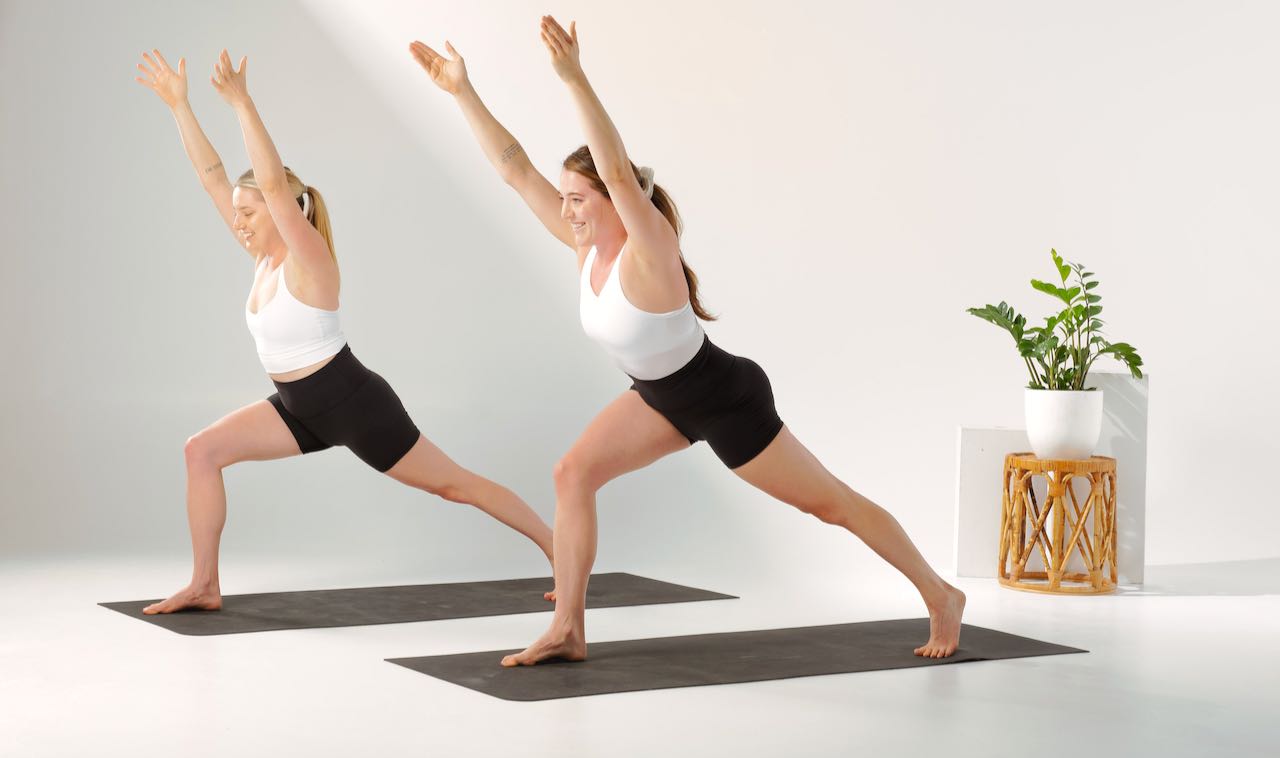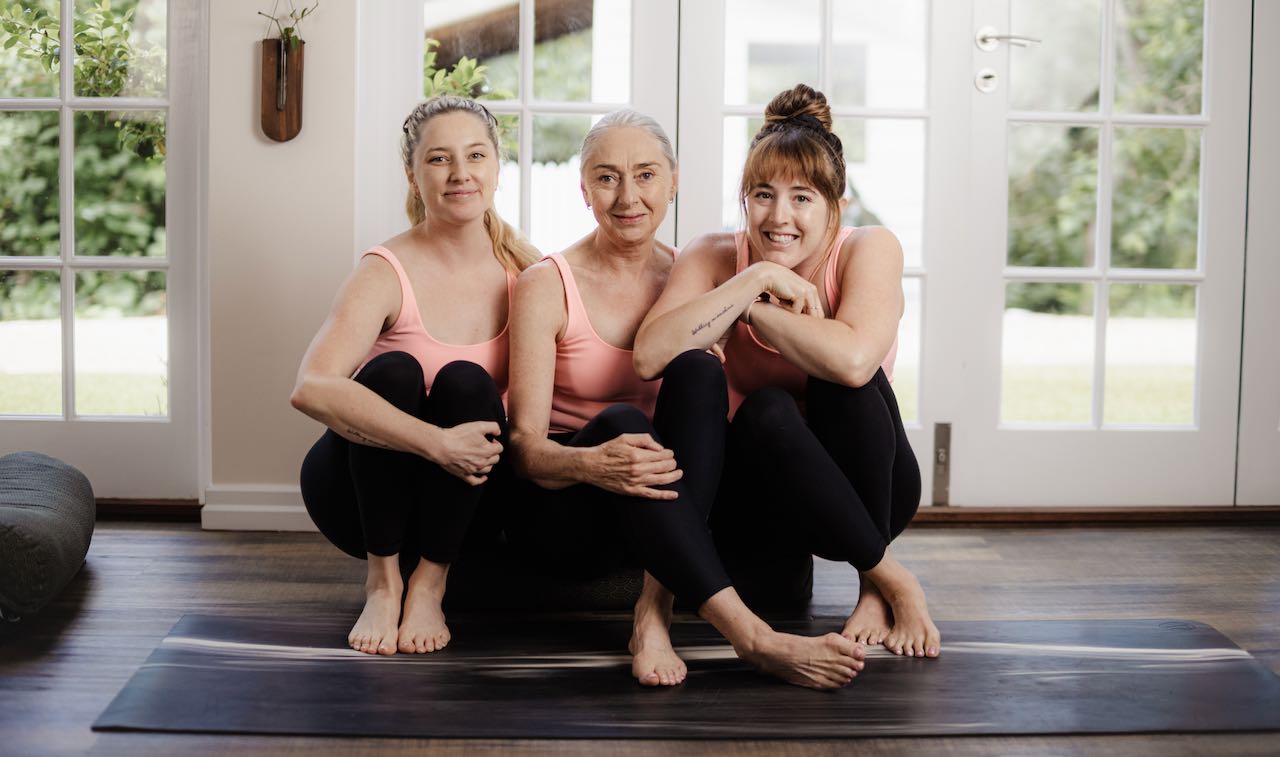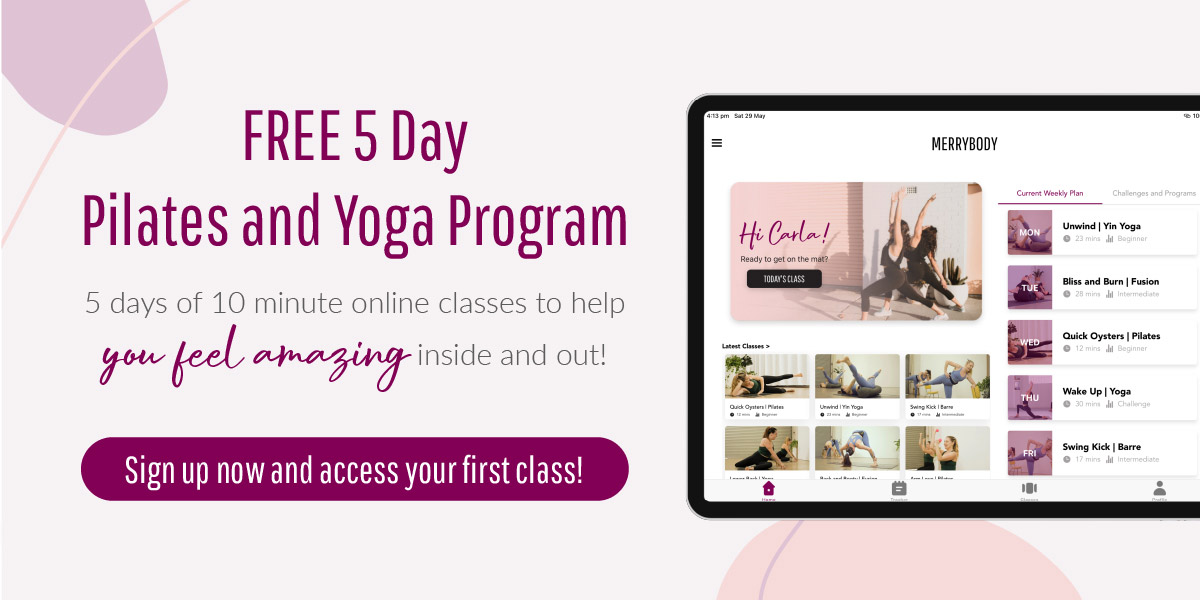Are you in the market for a Yoga or Pilates mat? If you’ve never had to shop for one before it can get a little confusing. Especially when there are so many types of mats to choose from! You might be thinking what are the differences between Yoga mats and Pilates mats? What surface is better? How thick? Keep reading, we’ve got all the answers for you to feel confident about your Yoga or Pilates mat purchase.
Pilates and Yoga exercise mats do look similar to the naked eye, but they are very different in many ways. They are mostly made from similar materials, this makes them easy to confuse, but they differ in thickness levels and densities.
For our personal practices, we use a 5mm or 0.19 inch thick mat, 66cm or 24 inches wide and 180cm or 71 inches long, made from rubber and polyurethane top layer and natural rubber base. These are from Lululemon and are called ‘The Reversible Mat’. There is also a longer mat option.
Here’s one of our full length Yoga and Pilates Fusion classes. Showing that the mats are perfect for both Yoga and Pilates.
This works well for our Pilates and Yoga home practices. But in some instances, or if you practice only Yoga or only Pilates it might be important to use the correct mat for your activity, especially if you go into a Studio.
The reason we got this style of mat is that the thickness is enough to add a little cushion, but you don’t sink down into it. The polyurethane soaks up moisture and is also grippy, for us this is essential. We hate the feeling of slipping and sliding on a mat, especially with Yoga poses. This is why we stay clear of soft material top layers, like suede finishes for example, they may look adorable but, in our opinions, they are terrible to practise on.
Pilates
Pilates was invented in the 1920s by Joseph Pilates with the purpose of physical rehabilitation. Pilates exercises are all about maintaining a healthy and balanced body. The practice (with consistency) will help you build strength and increase flexibility. It’s an exercise well known to build core strength, improve posture and even reduce back pain.
Pilates is based on six main concepts:
- Control
- Centering
- Concentration
- Flow
- Breathing
- Precision.
Pilates Mats
Thickness and Density
Pilates mats are thicker and have a higher density, standard Yoga mats on the other hand are thinner.
Pilates mats are generally around 6mm or ¼-inch thick and up to 12 mm or ½-inch thick. This thickness is best suited for more traditional Pilates. Traditional moves like roll ups, swan and jackknife. Extra cushioning, comfort, and support is required for body parts. This is to prevent the terrible back pain that can happen when you roll on a hard surface area or thin mats.
In our Pilates classes we focus on functional movement that is safe for the majority of bodies to do in an at home scenario. Moves that are perfect for beginners to advance and less likely to lead to injury. In our opinions, many of the Classical Pilates moves are not appropriate for safe and effective movement, just like many Yoga moves.
This is why in MerryBody Pilates Classes you don’t need a separate Pilates and Yoga mat. A Yoga mat is ideal for both modalities.
Construction and Materials of Pilates Mats
Pilates mats are mostly made from foam or PVC, which are known for providing cushioning and comfort. PVC is a very durable material, but it is not the most eco-friendly option.
Yoga
Yoga Asana, the exercise element of Yoga originated in India and has been in existence for 5000 years. Yoga is a combination of physical poses, mindfulness and really a philosophy for living. It’s a practice that helps you become more present in the moment. Physically speaking, Yoga will help increase your strength and flexibility. It will also help you to release tension and welcome more peace.
Yoga Mats
We have already established that Pilates mats are usually thicker and denser than Yoga mats. There really is no general rule when it comes to the thickness of Yoga mats.
It all depends on the yogi’s needs and preferences. The ideal choice for you will depend on many aspects and factors, such as yoga skill level, type of yoga that is being practised, the presence of any medical condition, and many more.
Yoga mats have several thickness levels, but the most common thickness for a standard yoga mat is 2.5 mm (0.1 inches) to 5mm (0.2 inches).
Construction and Materials
There seem to be far more options available for Yoga mats in regards to what the mat is made from. There are PVC yoga mats, rubber, natural rubber, cork mats, recycled rubber mats, foam mats and more. There are mats that will offer more cushioning and comfort, mats that will last longer with less wear and tear. Then of course eco-friendly materials.
In the end it’s all about finding the best mat for you and your requirements.
If you practise every day, durability is important. If you have sensitive knees, cushioning is something to think about. If you practise in a traditional Pilates Studio, you’ll probably want to go with a thicker mat. If you practise at home and do both Yoga and Pilates, you’ll want something that works for both. If you travel lots, a thin yoga mat is better for packing. Then there is budget and environmental factors!
It’s best to think about what is most important to you, find a few that seem suitable and then read the reviews. A great mat can really help you to create an amazing and consistent Yoga and Pilates practice.
If you’re now in the mood to get your Yoga and Pilates on, sign up for our Free 5 Day Program over here. Even if you don’t have a mat yet, you can press play and move your amazing body.
The core difference with MerryBody, the difference between us and other fitness classes, is that we don’t share before and afters, we don’t count calories, we don’t obsess over the number on the scales. To put it simply, it’s not just about weight loss.
You can experience so much goodness from a variety of physical activities, including Yoga and Pilates. Benefits like better moods, less stress, less anxiety, more strength, more flexibility and more comfort within the body. The list goes on.
Sign up, try the classes and if you have any questions let us know!
Always merrymaking
Emma + Carla
Ps. you are amazing!



